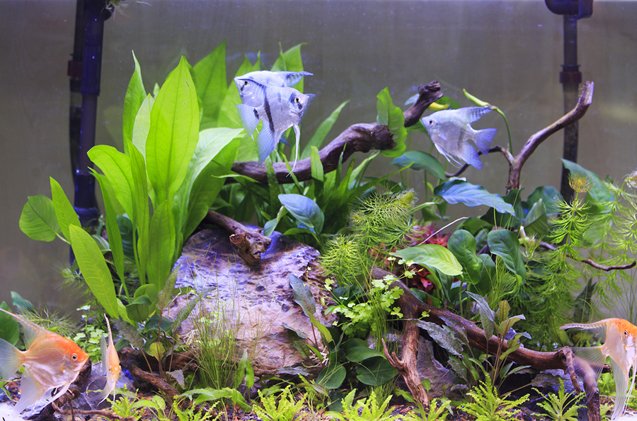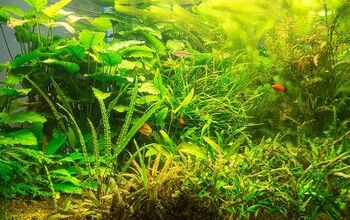Planted Tank Basics: What Aquarium Plants Need to Thrive

Like all living things, aquarium plants need certain nutrients and conditions in order to thrive. If you hope to cultivate a thriving planted tank, you will need to learn what those things are and do your best to achieve them in your own tank.
Top Four Things Aquarium Plants Need
There are four main things that aquarium plants need in order to live – water, light, nutrients, and carbon dioxide. Here’s an overview of each of these things as well as tips for cultivating them in your planted tank.
- Water: All plants require water in order to live but it is especially important for aquatic plants. Some aquatic plants can also grow above the surface of the water as long as their roots are submerged, but most aquatic plants must be completely submerged in water.
- Light: Plants grow and obtain nutrients through the process of photosynthesis which utilizes light as the main source of energy. In order to grow properly, aquatic plants need full-spectrum lighting which mimics natural daylight. Some plants require more or less light than others but most plants need about 10 to 14 hours of light per day.
- Nutrients: In addition to light, aquatic plants need certain nutrients in order to thrive. The most important nutrients are nitrogen, phosphorus, and potassium but certain trace elements are also required. Plants obtain the main three nutrients (known as macronutrients) from fish waste as it decomposes in your tank water. The trace elements your plants need (called micronutrients) can be found in tap water – you should perform weekly water changes to make sure your plants always have enough micronutrients.
- Carbon Dioxide: Through the process of photosynthesis, live plants convert carbon dioxide into oxygen. There is already carbon dioxide in your aquarium because it is a byproduct of respiration and gas exchange at the surface of the water in your tank. You can increase the amount of CO2 in your tank using a CO2 injector and by decreasing the aeration from your tank filter.
Tips for Thriving Aquarium Plants
When one of the four factors discussed above is lacking, all of your aquatic plants will suffer. On the other hand, too much of some of these things could also negatively impact your plants. In order to make sure your plants have enough light, use full-spectrum lighting that provides 3 to 5 watts per gallon. You may also want to use an automatic timer to ensure that your lights stay on for about 12 hours per day. To ensure that your plants get the right nutrients, make sure you use the right substrate in your planted tank and fertilize your plants as needed. Some of the best substrates to use for planted tanks include Eco Complete, AquaSoil, and Fluorite.
There is nothing more beautiful than a lushly planted freshwater tank. The key to making sure that your live plants grow and thrive is to learn what they need and to provide those things. Remember, different types of plants have slightly different needs so be sure to do your research before you stock your tank to make sure you cultivate the right conditions.

Kate Barrington is the loving owner of two cats (Bagel and Munchkin) and a noisy herd of guinea pigs. Having grown up with golden retrievers, Kate has a great deal of experience with dogs but labels herself a lover of all pets. Having received a Bachelor's degree in English, Kate has combined her love for pets and her passion for writing to create her own freelance writing business, specializing in the pet niche.
More by Kate Barrington























